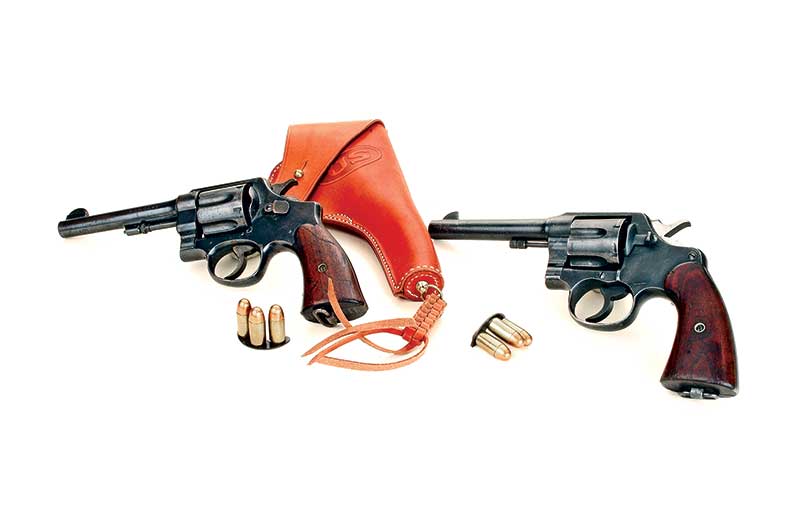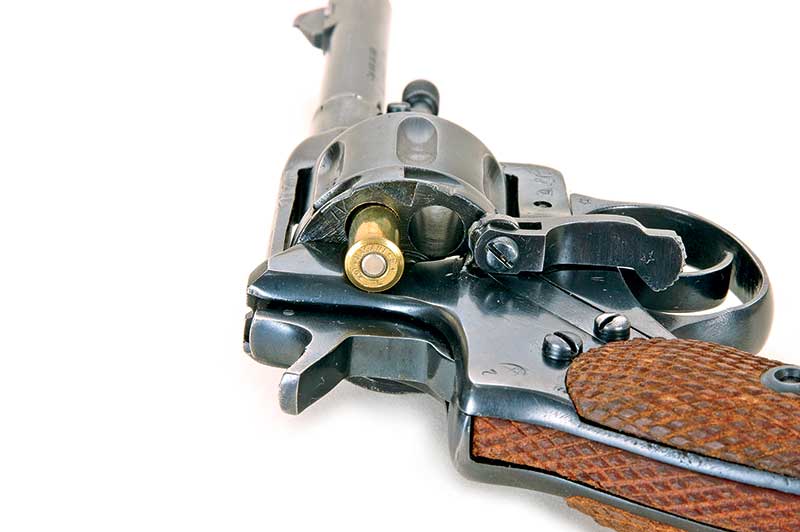Not As Bad
The Japanese also issued an obsolete revolver in sizeable numbers, although it is superior to the Soviet’s Model 1895 by a wide margin. This was their Type 26 originally developed in the mid-1890’s for horse mounted soldiers. In World War II it was mostly issued to non-commissioned officers (NCOs). For some reason the Japanese decided it should be double action only so there is no spur atop the hammer. In function it is of top break design, essentially as were Smith & Wesson revolvers until about the turn of the 19th/20th centuries. A difference was the Type 26’s sideplate is hinged allowing it to swing open, exposing the revolver’s innards for cleaning.
Type 26’s had their own unique cartridge. It is a rimmed 9mm with military loads nominally delivering 149 gr. lead bullets at about 750 fps. Case length is .86". Cases for firing can be made by shortening 1.16" .38 Special brass and thinning rim diameter. A perfect bullet for 9mm Japanese Type 26 revolvers is the 147-gr. cast roundnose of .356" offered by Oregon Trail Bullet Company.
I did pay for a Type 26. I am impressed with its manufacturing quality if not its design, and I do handload for it using 3.0 grains of Titegroup powder under the above bullet. I have not chronographed that load but it shoots to my Type 26’s fixed sights at 25 feet. Barrel length is 43/4".











